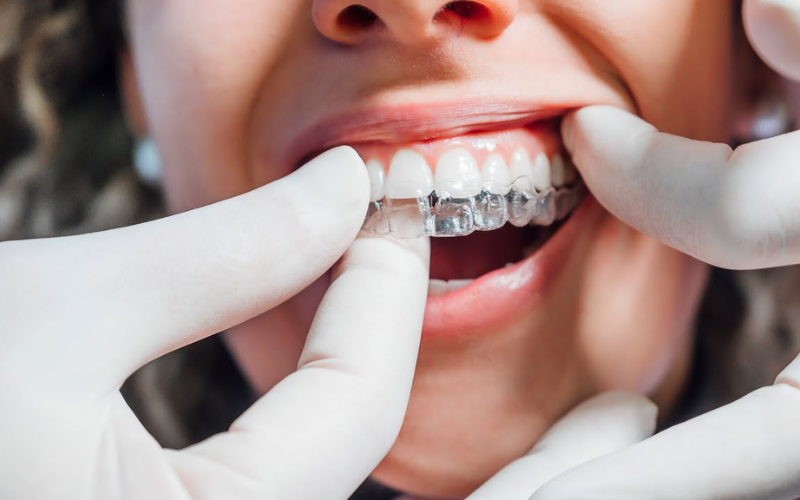4034 US-9 Howell, NJ 07731

Dental emergencies can be distressing, and one of the most common situations people face is a knocked-out tooth. Knowing when to seek immediate care from an emergency dentist in Howell, NJ, is crucial and whether a root canal is necessary. The severity of the injury and how the tooth is cared for immediately after being knocked out plays a major role in determining the next steps. Getting prompt emergency dental treatment gives you the best chance of saving the tooth. In this guide, we will explore the scenarios in which a root canal may be required for a knocked-out tooth emergency and provide valuable insights on handling such situations effectively.
Understanding The Severity Of A Knocked-Out Tooth
When a tooth is knocked out, it can lead to various degrees of damage. To determine whether a root canal is necessary, assessing the injury’s severity is essential. Here are some key factors to consider:
- Condition of the Tooth: If the knocked-out tooth is relatively intact with minimal damage, the chances of needing a root canal are lower. However, a root canal may be necessary if the tooth is fractured, has multiple cracks, or significant portions are missing.
- The Speed of Response: Time is of the essence when dealing with a knocked-out tooth emergency. The faster you seek dental care, the better the chances of saving the tooth. If you can see an emergency dentist in Howell, NJ, within the first hour, it may reduce the likelihood of needing a root canal.
- Presence of Infection: A root canal may be required if the knocked-out tooth becomes contaminated or infected. Infection can occur when bacteria enter the tooth’s pulp, causing pain and inflammation. It’s crucial to watch for signs of infection, such as swelling, pus discharge, or a foul taste in your mouth.
Scenarios Requiring a Root Canal
Now, let’s delve into specific scenarios where a knocked-out tooth emergency may necessitate a root canal:
- Pulp Exposure: When the tooth is knocked out forcefully, the pulp (the innermost part of the tooth) can become exposed or damaged. If this occurs, the pulp will likely become infected over time, leading to severe pain and discomfort. A root canal is often necessary to remove the infected pulp and save the tooth.
- Extensive Fractures: In cases where the knocked-out tooth has extensive fractures that extend into the pulp chamber, a root canal may be recommended. Fractures compromise the tooth’s structural integrity and increase the risk of infection.
- Delayed Treatment: As mentioned earlier, the timing of treatment is crucial. If you delay seeking care from an emergency dentist in Howell, NJ, and the tooth is exposed to bacteria for an extended period, infection can occur. A root canal may be the only option to eliminate the infection and preserve the tooth.
- Infection Symptoms: If you experience symptoms of infection, such as persistent pain, swelling, or drainage of pus from the affected area, it’s a clear indication that a root canal may be necessary. These symptoms often signify that the infection has reached the pulp and needs immediate attention.
Handling a Knocked-Out Tooth Emergency
In any knocked-out tooth emergency, your first steps can make a significant difference in the outcome. Here’s a step-by-step guide on how to handle such situations effectively:
Retrieve the Tooth
If you’ve knocked out a tooth, handling it with extreme care is vital to avoid further damage. Be very gentle when picking it up. Only touch the tooth by the crown (the visible white part above the gum line). Avoid grasping or pulling the root, as this can sever blood vessels or periodontal ligaments needed for reimplantation. Rinse the tooth gently under cold milk or saline solution to remove visible dirt or debris, but do not scrub, use soap, or aggressively wash it. Harsh cleaning can damage the root surface and cellular structures necessary for reattachment. Handle the tooth delicately like a fragile artifact.
Attempt Reinsertion
First, inspect that it is facing the proper orientation. Then, carefully insert and press lightly to reposition it in the socket. Have the patient hold it in place by gently biting down on a clean piece of gauze or cloth. Do not forcefully push the tooth in. Rather, stabilize it enough so it remains lodged in the socket until you receive professional dental treatment. Time is of the essence, so reinsertion might increase the chances of salvaging the tooth.
Preserve the Tooth
If you cannot reinsert the tooth, the next priority is keeping it moist and viable. Please place it in a container of cold whole milk, specialized tooth preservation solution, or sterile saline. Milk’s nutrients and osmolality help maintain cell viability. Avoid storing the tooth in regular tap water, which can damage cells. Likewise, do not let the tooth dry out – it must remain damp to survive. Seek emergency dental help immediately while preserving the tooth in an optimal medium.
Seek Immediate Dental Care
Contact an emergency dentist in Howell, NJ, immediately if you experience a knocked-out tooth. Inform them you are dealing with a dental emergency so they can advise you accordingly. Time is critical for your dentist to have the best chance of saving the tooth. Be sure to see if symptoms persist – get professional assessment and treatment as soon as possible.
Manage Pain
While waiting for your dental appointment, you can take over-the-counter pain medication to alleviate discomfort. However, avoid placing aspirin directly on the affected area, which may damage the tooth and surrounding tissues. Oral ibuprofen, acetaminophen, or topical numbing gel can help ease pain until you receive appropriate emergency care.
Preventing Knocked-Out Tooth Emergencies
While you can’t prevent all potential dental emergencies, there are steps you can take to reduce the likelihood of knocked-out teeth:
- Wear custom mouthguards during contact sports like football, hockey, basketball, or boxing. Have one professionally fitted by your dentist for maximum protection. Mouthguards cushion forceful blows that could otherwise knock teeth out of their sockets. Protect those pearly whites.
- Avoid chewing hard foods like ice cubes or using your teeth to tear open packages. The excessive force can crack teeth, damage roots, and displace teeth from their sockets. Opt for soft, gentle chewing habits.
- Always wear your seatbelt properly while driving or riding in vehicles. Seatbelts prevent traumatic facial and dental injuries that can occur during car accidents. Lock it in place for safety.
- Get prompt treatment for tooth decay or gum disease issues. Compromised tooth roots and bone are more susceptible to being knocked out. Maintain healthy teeth and gums.
- Consider dental implants or bridges to replace any missing teeth. The gaps leave remaining teeth more vulnerable to getting knocked out. Restore your smile for strength.
While losing a tooth can feel devastating, advances in emergency dentistry make tooth preservation possible in many knocked-out tooth cases. With urgent care from an endodontist and restorative dentist, root canals and crowns can often save damaged but still viable teeth. The tooth may revascularize independently without needing a root canal in less severe cases. No matter the situation, seek a professional dental assessment immediately if you experience a tooth getting knocked out. Quick action is key to determining the right treatment and improving the chances of restoring your bright smile.



